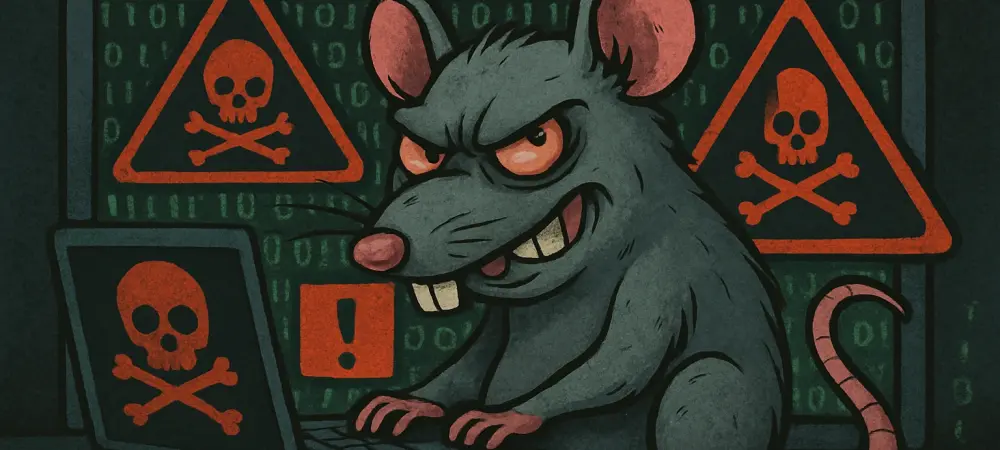In an era where digital transactions are increasingly central to daily life, the emergence of highly advanced malware poses a severe threat to unsuspecting users, particularly those engaged in cryptocurrency activities. Cybersecurity researchers have recently uncovered a formidable Remote Access Trojan (RAT) named kkRAT, which specifically targets Chinese-speaking individuals. Distributed through deceptive phishing sites hosted on popular platforms, this malware disguises itself as legitimate installers for well-known applications. Once inside a system, it employs intricate evasion techniques to steal sensitive data, with a particular focus on cryptocurrency wallet addresses. This discovery highlights the growing sophistication of cyber threats and the urgent need for robust defenses against such stealthy attacks. As cybercriminals refine their methods, understanding the mechanics of threats like kkRAT becomes essential for safeguarding digital assets and personal information from malicious actors.
Unpacking the Malware’s Design and Deployment
Advanced Evasion Tactics in Initial Stages
The ingenuity of kkRAT lies in its carefully crafted design to bypass traditional security measures from the moment it enters a system. Delivered through a malicious executable hidden within a ZIP archive, the Trojan initiates its attack chain by performing a time stability analysis using functions like QueryPerformanceCounter. It also scrutinizes hardware configurations, such as available disk space and CPU core count, to detect sandbox or virtual machine environments commonly used by security tools. If such an environment is identified, kkRAT halts its operation to evade analysis. This calculated approach, paired with dynamic resolution of Windows API functions through single-byte XOR obfuscation and decryption of shellcodes via XOR transforms, ensures that the malware often goes undetected during automated detonation processes. Such tactics demonstrate a level of sophistication that challenges even the most advanced security protocols.
Multi-Stage Deployment for Maximum Stealth
Beyond its initial evasion strategies, kkRAT unfolds through a multi-stage deployment process that further solidifies its stealth capabilities. In its second stage, the malware disables network adapters to sever communication with antivirus and endpoint detection and response systems, while specifically targeting processes associated with Chinese security vendors. It exploits a vulnerable driver, RTCore64.sys, to neutralize kernel-mode defenses and manipulates registry values for software like 360 Total Security to disable network checks. Additionally, it schedules tasks with SYSTEM privileges to persistently terminate protective processes upon user logon. In the third stage, kkRAT retrieves heavily obfuscated shellcode from hardcoded URLs, uses Base64-encoded instructions, and sideloads legitimate executables with malicious DLLs to deploy its final payload, decrypted with a six-byte XOR key. This layered approach makes tracing and mitigating the threat exceptionally difficult for security teams.
Targeting Cryptocurrency and Ensuring Persistence
Sophisticated Financial Theft Mechanisms
One of the most alarming features of kkRAT is its targeted approach to financial theft, particularly in the realm of cryptocurrency transactions. Once active, the malware monitors clipboard contents for wallet addresses associated with popular cryptocurrencies like Bitcoin, Ethereum, and Tether. Using a specific command, identified as 0x4D, it replaces these addresses with ones controlled by attackers, effectively redirecting transactions without the user’s knowledge. This silent hijacking mechanism poses a significant risk to individuals who frequently engage in digital currency exchanges. Moreover, kkRAT establishes a TCP connection to its command-and-control server, employing zlib compression and XOR-based encryption for secure communication. By constructing a detailed device fingerprint that includes OS version, CPU frequency, and installed antivirus signatures, attackers can prioritize high-value targets, amplifying the potential damage of their operations.
Persistence and Additional Capabilities
Ensuring its longevity on infected systems, kkRAT employs several methods to maintain persistence and expand its reach within a compromised environment. The malware creates startup folder shortcuts or modifies registry run keys to remain resident even after system reboots. This allows it to continuously execute commands, load plugins for remote desktop management, or terminate critical processes as needed. Beyond persistence, kkRAT relays traffic through Go-based SOCKS5 proxies, further obscuring its activities from network monitoring tools. Its ability to integrate features from other notorious RATs, such as Ghost RAT and Big Bad Wolf, while deploying variants like ValleyRAT and FatalRAT, underscores its adaptability. This blend of persistence and versatility positions kkRAT as a particularly dangerous tool in the hands of cybercriminals, capable of sustained exploitation of compromised systems for financial gain and beyond.
Reflecting on a Formidable Cyber Threat
Lessons Learned from Evasion Mastery
Looking back, the discovery of kkRAT revealed just how far malware design has evolved, with its intricate evasion tactics setting a new benchmark for cyber threats. The ability to detect and terminate operations in sandbox environments, combined with disabling network adapters and targeting specific security software, showcased a level of precision that outmaneuvered many conventional defenses. This Trojan’s use of obfuscated shellcode and dynamic API resolution further complicated efforts to analyze and counteract its spread. Reflecting on these capabilities, it became evident that traditional security measures often fell short against such meticulously engineered threats. The multi-stage deployment process, designed to operate under the radar, highlighted the importance of staying ahead of cybercriminals through continuous innovation in detection methodologies and a deeper understanding of malware behavior.
Charting a Path Forward for Defense
In the aftermath of analyzing kkRAT, the focus shifted to actionable strategies that could mitigate similar threats in the future. Enhanced threat intelligence emerged as a critical component, enabling organizations to anticipate and identify sophisticated malware before it could inflict harm. Proactive defense measures, such as real-time monitoring of clipboard activities and stricter validation of software installers, offered practical steps to curb financial theft. Additionally, fostering collaboration among cybersecurity communities to share insights on emerging RAT variants proved invaluable for building resilient systems. As supply-chain-style attacks continued to rise, adopting a multi-layered security approach—combining advanced endpoint protection with user education on phishing risks—became essential. These efforts aimed to not only address the immediate dangers posed by kkRAT but also to prepare for the next wave of innovative cyber threats on the horizon.

